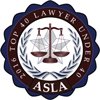Stamford Speeding Detection
If a driver is pulled over in a high traffic area, and the officer used a radar or laser gun to determine their speed, the driver can argue that their vehicle was not speeding and that the officer read the speed of another vehicle instead. Experienced traffic lawyers have seen cases where a radar or laser gun can tag the wrong vehicle when the gun is used in a heavily trafficked area.
Laser technology and radar devices are not completely reliable, so sometimes the driver needs to look into whether the device was properly calibrated and whether it has been maintained by the police department. The officer needs to be asked how they used it because sometimes the device is not used properly. Calibration and use of the device can be used to contest whether a driver was actually speeding.
Speed Traps
A speed trap is any area on a road that officers will sit and try to catch vehicles speeding. It is usually by radar and usually in an area that people are known to speed. Police officers set up and patrol speed traps in order to catch drivers speeding in certain areas where speeding is most common. They are often set up near schools and on busy roads, like High Ridge and Long Ridge Road.
There a lot of speed traps on High Ridge Road and in front of Rippowam Middle School. They are usually near schools. There are also a lot of speed traps downtown near UCONN. Generally, where there are gridlocks on the road, there will be a lot of officers making sure that people are not speeding.
Common Traffic Radar Tools
Stamford Police Officers use laser and radar guns to detect speeding. They are generally accurate. If there is a problem, it depends on calibration and whether or not the officer brings the calibration certificate to court.
Interference is a common issue with radar instruments. Meaning, light interfering with it or locking it onto the wrong object if there is a lot of traffic at the time that it was used so it could have grabbed the wrong car. Calibration could be an issue, too.
Defining Pacing
In Stamford, pacing is when an officer follows a vehicle to try to determine the speed of the vehicle that it is following. It will drive behind it for a little while and try to match its speed to determine the speed of the driver. That comes with other things that the officer needs to do to make sure that the speed that they come up with is reliable. They would have to make sure that there is a certain amount of space between the vehicles, that they do not get too close to the vehicle, and that the distance is consistent.
The officer has to maintain the same distance between his or her vehicle and the driver’s vehicle. Sometimes it is hard. If the driver is turning, the officer might break and cause the distance between the officer and driver to change. The officer might not always start over if this happens and that can an issue. Generally, they do not have a good case unless they maintain the same speed for a while with equal distance between the vehicles.
Issues with Pacing
A defense can be that the officer did not follow the vehicle long enough. If they just followed for a few seconds and then pulled the vehicle over, they did not follow long enough to establish the actual speed of the vehicle. It would not be good enough evidence to charge someone with speeding.
Road conditions could be a defense. If it is a windy road and the officer is coming around a turn and needs to use the brakes, it is not as reliable as if they were driving on a straight road. The type of road makes it more difficult, as well.
An attorney can claim that the officer did not maintain the same distance between their car and the driver’s car. If they did not maintain the same distance, the speed could vary. The officer also has to make sure that they can see properly. If it is dusk or nighttime, it might be a little bit more difficult, especially with headlights or taillights involved.












